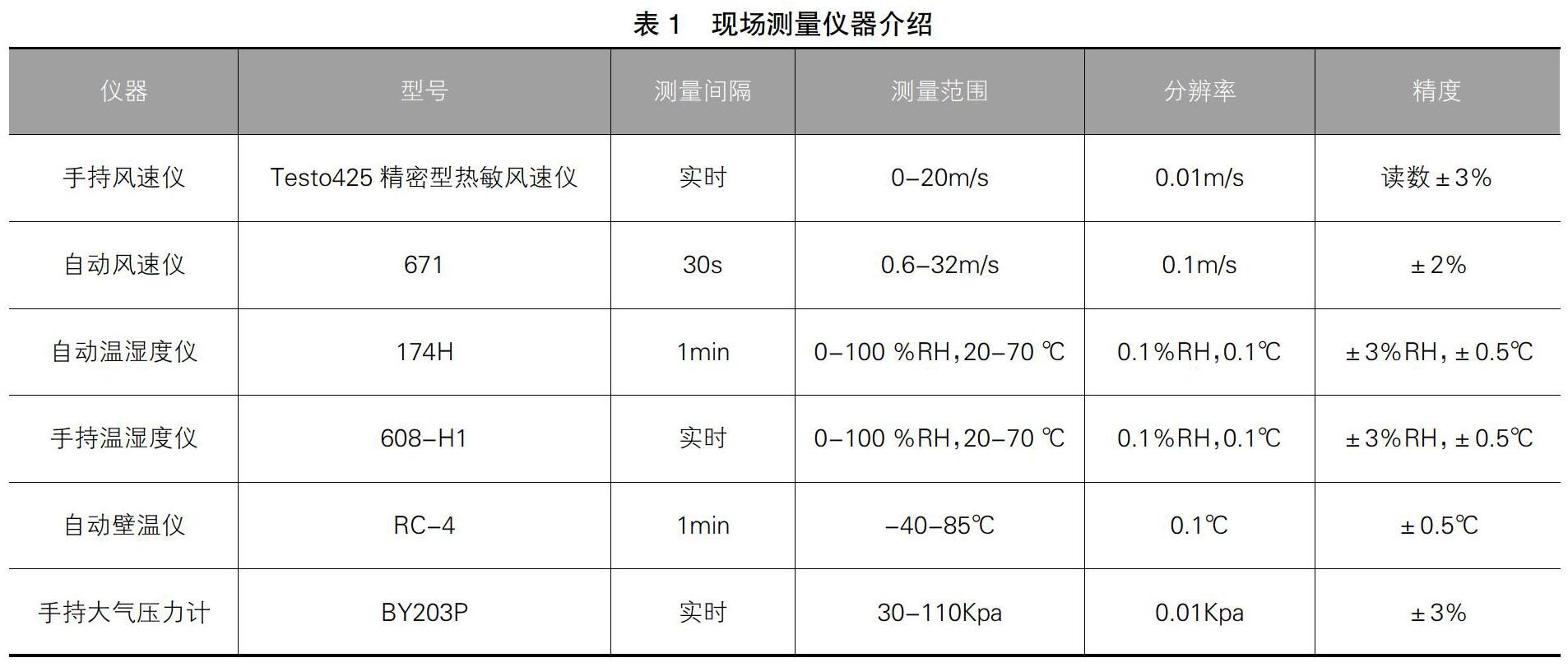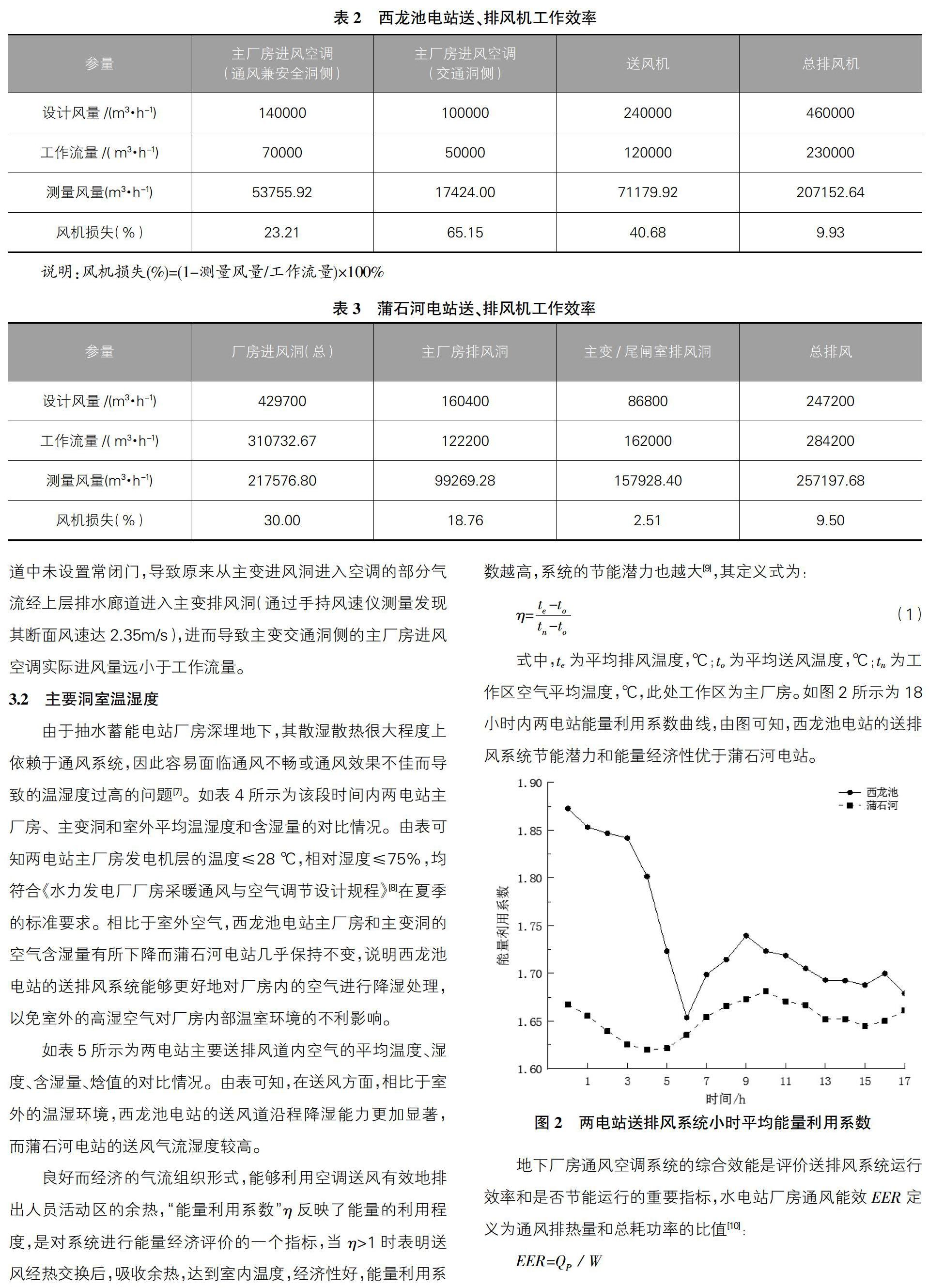抽水蓄能电站地下厂房送排风测试对比研究
2020-07-30张东刘春青耿江博张志超田逸群
张东 刘春青 耿江博 张志超 田逸群



摘 要
抽水蓄能电站送排风系统对于地下厂房内温湿环境调节和气流组织的控制具有决定性的作用。通过现场自动和手动仪器测量相结合的方式,分别从主要洞室温湿度场和送排风道速度场的角度,对地上式和地下式两种典型的总排风机房布置的抽水蓄能电站进行测量对比分析。结果表明,两电站的排风机工作效率相近且大于送风机,蒲石河电站送风机工作效率高于西龙池,提出在西龙池电站上层排水廊道设置常闭门的改进建议。两电站厂房内的温湿环境均符合电力行业标准,而西龙池电站能够更好地对厂房内和送风道沿程的空气进行降湿处理,送排风系统的综合效能、节能潜力和能量经济性更好。
关键词
抽水蓄能电站;送排风系统;温湿度场;排风机工作效率;综合效能;经济性
中图分类号: TV554;TV731.6 文献标识码: A
DOI:10.19694/j.cnki.issn2095-2457.2020.19.033
Abstract
The air supply and exhaust system of pumped storage power station plays a decisive role in the regulation of temperature and humidity environment and the control of air distribution in the underground powerhouse.Through the combination of on-site automatic and manual instrument measurement, this paper makes a comparative analysis of the above ground and underground pumped storage power plants with two typical general exhaust fan rooms from the perspectives of temperature and humidity field of main caverns and velocity field of air supply and exhaust ducts.The results show that the working efficiency of exhaust fan in the two power stations is similar and higher than that of supply fan,and the working efficiency of supply fan in Pushihe power station is higher than that in Xilongchi Power Station.The temperature and humidity environment in the two power plants are in line with the electric power industry standards,while Xilongchi Power Plant can better reduce the humidity of the air in the plant and along the air supply channel,and the comprehensive efficiency,energy saving potential and energy economy of the air supply and exhaust system are better.
Key Words
Pumped storage power station;Air supply and exhaust system; Temperature and humidity field;Exhaust fan working efficiency; Comprehensive efficiency;Economy
0 前言
抽水蓄能电站地下厂房的热湿环境调控问题是大型地下空间建设亟待解决的普遍性技术难题[1]。为此,地下厂房在一定程度上需要依赖一个运行良好、性能优化的机械排风系统[2],其布置方案主要有两种:排風下平洞+排风竖井+地面排风机房的布置形式(简称地上式)和排风下平洞+地下排风机房+排风竖井+地面排风口的布置形式(简称地下式)。本文分别对西龙池抽水蓄能电站(地上式)和蒲石河抽水蓄能电站(地下式)送排风系统的温湿度场和速度场进行测试对比分析,并对两种布置方案的优缺点做出相应评价,提出改进意见。
1 电站概况
山西省西龙池抽水蓄能电站[3](以下简称西龙池电站)位于山西省忻州市五台山县境内,采用地上式排风机房布置方式,如图1(a)所示。室外新风全部供给主厂房、副厂房和主变洞,主厂房靠近通风兼安全洞侧布置2台ZKW-70风机,主厂房靠近主变交通洞侧布置2台ZKW-50风机,总排风机房布置2台4-79-2-16E风机。
辽宁省蒲石河抽水蓄能电站[4](以下简称蒲石河电站)位于辽宁省丹东市宽甸满族自治县境内,采用地下式排风机房布置方式,如图1(b)所示。全厂的进风通道主要为厂房进风洞,排风通道主要由副厂房排风竖井、主厂房/主变洞/尾闸室排风竖井(以下简称排风竖井)和进厂交通洞组成。
2 现场测量情况说明
为了解抽水蓄能电站地下厂房在各洞室贯通后的风流运行规律及排风效果[5],参考前人经验,本次测量数据包括:洞室或风口断面的风速、温度、湿度、洞室壁面温度和静压[6],测点布置于电站的进风和排风通道,以及交通洞、主厂房、主变洞等关键洞室。
